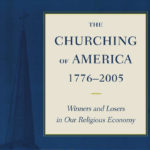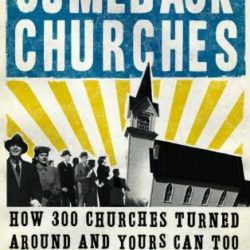By Dwight Sandoz
Read the Academic Article: Partnership in the Gospel
The summer of 1987 provided a new opportunity for ministry and our young family moved to a small community in western Nebraska to pastor a rural church. Several men in the small-town church worked on area ranches, providing opportunity for time with ranchers cowboys and recapturing a childhood enjoyment of horses. After a couple years, I purchased two untrained horses, but they needed the diligent work of training. The horses taught me important life lessons while responding to the riding and training process. Looking back at the experience, I learned far more than the horses I attempted to teach. The process of developing a horse into a good partner involved more than I understood but that began an interest to study horse training.
A video with a trainer, Shana Terry (Down Under Horsemanship 2017), and her trained American Quarter Horse, Marty, demonstrates an amazing partnership of performance and difficult maneuvers.[1] Marty performed flawlessly while Terry gave instructions from a distance without halter, bridle, or lead line touching the horse. The horse ran, made difficult spins, jumps and maneuvers from cues that he learned from Shana. One exercise demonstrated a partnership of trust and communication where Marty backed down a slope across a body of water and then trotted back to Shana on cue. The relationship, trust, and performance of Shana and Marty should pale in comparison to the partnership of believers to accomplish God’s will for His kingdom, exceeding the best partnership with a well-trained horse.
[1] Liberty Down Under Horsemanship. Shana Terry and Marty. https://www.youtube.com/watch?v=AYeHIQqDo2I Accessed December 2019.
The maneuvers that Shana trained Mary to do truly make a person horse partnership look easy. The level of communication between trainer and horse required a unity and understanding rarely found. If a horse trainer can find that level of partnership, how much more should the servants of the Lord establish partnership.
Partnership requires unity and togetherness to build relational bonds fulfilling God’s great mission. Creation unfolds with the first example of partnership. God said, “Let us make man in our own image” (Gen. 1:26). The doctrine of the trinity, some refer to the tri-unity of God gives insight in partnership (Evans 2016). Charles Hodge (1981, 445) gave insight into this unity. “According to the scriptures, the Father created the world, the Son Created the world, and the Spirit created the world: The Father preserves all things; the Son upholds all things; and the Spirit is the source of all life.” The unity and partnership of the trinity, beginning from the account of creation and continuing throughout scripture, paint a picture of the potential of partnership according to God’s design.
The work of partnership in God’s relationship with man continues in the New Testament primarily through the person and work of the Holy Spirit. Jimmie Evans III (2016, 2) noted the teaching of Jesus where he expressed the necessity of sending the Holy Spirit:
While with His disciples, Jesus was a present helper and teacher, but following His departure the Holy Spirit takes on those roles (John 14:26). He will also remind them of Jesus’ words, and He will testify about Jesus through the disciples (John 14:26; 15:26). Not only do these verses indicate His role, they also reveal His identity in terms of the progression of who sends Him. In 14:16, He will ask the Father to send the helper. In 14:26, the Father will send the Holy Spirit in Jesus’ name. Then in 15:26, Jesus refers to Himself sending the Holy Spirit who proceeds from the Father. Each of these instances of sending reveals a unity and bond between the Father, Son, and Holy Spirit, whereby the three comprising the Trinity are displayed working in cooperation.
This work of the Holy Spirit finds greater expression through the New Testament but especially in Acts where Luke identifies the Holy Spirit as the primary source and partner who leads and guides the church.
The first chapters of Acts set the stage for the remainder of the New Testament modeling reliance on the Holy Spirit to direct and guide the church. (Acts 1:8, 4:31, 5:32, 6:3 6:19) The disciples trusted the Savior who baptized in the Holy Spirit and His partnership to lead the New Testament Church. (Acts 15:28) The birth of the church came with an expectation of partnership with the Holy Spirit. (Acts 1:8) This continued with varying intensity from the days of the early church on. A refreshing and intensifying of this recognition of the Holy Spirit in the church occurred in the early Twentieth Century with a fresh outpouring of the Holy Spirit and a continued revival on Azusa Street in Los Angeles, CA. This Spirit led revival brought deep spiritual connections removing the classes separating people and released the power of partnership. (Miller 2015, 11-21) The spiritual renewal possessed similarities to the early church on the day of Pentecost when the Holy Spirit led people to love, celebrate, preach, plant, share and send people out with a transformational and redeeming message (Miller 2015, 15-20). These Spirit empowered believers became a discipling, multiplying community of faith without regard to race, class or gender and sent people out to plant churches, ministries, and missionaries throughout the world. This level of partnership continued through the following decades of the Pentecostal movement and remains in place to present times.[1]
That season brought significant partnerships from pastor to pastor, church to church and pastor to church. The culture of working and playing together reflected strong relationships where pastors worked together on churches, summer camps, church buildings, and other projects. They often celebrated together, hunted together, and some vacationed together.[2] The cooperation and collaboration, common both in decades past with the rural church and community, finds a less common place in rural life today; yet partnership continues to give blessing and life to all those who access it.
[1] The Pentecostal movement experienced and continues to experience a struggle to maintain partnership, however observations of four decades of ministry indicates seasons of refreshing tend to remove this tendency toward division and brings unity in the church.
My years sitting with older pastors allowed me to hear multiple stories of the partnership between pastors, churches, missionaries, and districts. The urgency of kingdom service and their sense of eschatology reflecting the soon return of Christ caused many leaders to see every person who worked diligently for the kingdom as a ministry partner. This level of partnership drove church multiplication and cooperation in ministry. They expressed a praxis of ‘one in the Spirit and one in mission.’ This did not represent all but many in the rural area where I first experienced church and the Pentecostal message.
Read the Academic Article Partnership in the Gospel


















